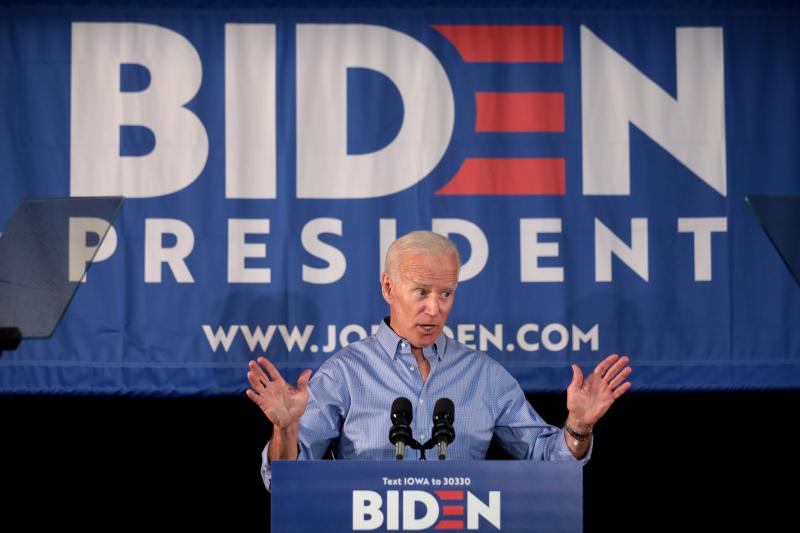
As part of his plan to raise taxes by an estimated $4 trillion, Democrat Presidential candidate Joe Biden is proposing to repeal Section 1031 “like-kind exchanges”.
1031s promote investment in residential and non-residential property by allowing a taxpayer to defer taxes on their capital gains if they use their gains to reinvest in new property.
Biden has proposed repealing 1031s to finance $775 billion in new spending on child care and elder care over the next decade. However, he is selling a false promise – this tax increase would finance a small fraction of the cost of his new spending plan.
In addition, repealing 1031s would harm economic growth, threatening jobs and new investment in housing and other real estate.
Like-kind exchanges are a mainstay of the tax code
Section 1031 has existed in the tax code for 100 years and allows investors to defer paying taxes on the sale of real property if they reinvest the earnings into a substantially similar asset. This can be done again and again, provided the transaction involves a similar type of property.
Because investors don’t have to pay tax until they cash out, Section 1031 eliminates a potential barrier to investment, which in turn promotes the more efficient allocation of capital resources.
For many years, 1031s were widely used for assets including real estate, machinery for farming and mining, and equipment such as trucks and cars.
As of the 2017 Tax Cuts and Jobs Act, like-kind exchanges can only be used for real property. Other assets are no longer eligible because they instead qualify for “full business expensing,” which incentivizes capital expenditure by allowing businesses to immediately deduct the cost of new investments.
However, Congress affirmatively retained like-kind exchanges for real estate, in an acknowledgement of the importance of Section 1031 as a provision to incentivize capital formation and investment in property.
Section 1031 helps grow the economy
Critics of like-kind exchanges argue that the provision is a loophole that allows taxpayers to avoid taxes. This is not true because the provision defers, rather than eliminates tax liability. A taxpayer that utilizes Section 1031 will eventually pay taxes on the asset when they cash-out.
In many cases, the tax deferral period is shorter than many assume because taxpayers do not utilize 1031s indefinitely. As noted in a study conducted by David C. Ling and Milena Petrova, the vast majority of 1031 acquired assets are later disposed of in a taxable sale:
“In contrast to the common view that replacement properties in an exchange are frequently disposed of in a subsequent exchange to potentially avoid capital gain and depreciation tax liability indefinitely, we find that in 88 percent of the cases in our dataset investors dispose of properties acquired in a 1031 exchange through a taxable sale.”
There are also significant benefits to the tax deferral offered by 1031s.
Recent studies have found that 1031s help provide taxpayers with liquidity that they can use to invest and create jobs. For instance, a study conducted by EY found that 1031s support $9.3 billion in annual economic output in residential and non-residential real estate.
This additional liquidity allows investors to avoid taking on debt and becoming overleveraged. By assisting the financing of new real estate projects, 1031s also help ensure a competitive and affordable housing market.
In contrast, repealing 1031s would harm investment in property. They would increase holding periods as taxpayers would be encouraged to retain assets longer to avoid paying capital gains taxes.
In fact, due to the added complexities of financing projects and taking on debt, an estimated 40 percent of real estate transactions would not have occurred without 1031s.
Repealing 1031 doesn’t raise revenue that Biden claims
Biden calls for using revenue raised from repealing 1031s to finance $775 billion in new spending on child care and elder care over the next decade.
However, repeal of 1031s does not come close to paying for the total cost of this new spending.
According to the Joint Committee on Taxation’s tax expenditure report, like-kind exchanges reduce revenue by $51 billion over five years.
However, this number is not the amount of revenue that would be gained from repealing the provision. As the JCT notes, tax expenditure calculations should not be confused for revenue estimates, in part because they fail to account for behavioral changes:
“A tax expenditure calculation is not the same as a revenue estimate for the repeal of the tax expenditure provision…unlike revenue estimates, tax expenditure calculations do not incorporate the effects of the behavioral changes that are anticipated to occur in response to the repeal of a tax expenditure provision.”
Before the TCJA narrowed 1031s to real estate, the JCT estimated that this tax expenditure was $98.6 billion over five years. In contrast, revenue raised from repealing 1031s was just $9.3 billion over five years, just 10 percent of tax expenditure value.
This significant difference is due to the fact that repealing like-kind exchanges would significantly alter the behavior of taxpayers leading them to forego new investments, which would reduce future taxes paid when the asset is sold, and reduce revenues from higher wages and more jobs created by 1031s.
Extrapolating this number based on today’s tax expenditure estimate would suggest that the score of repealing 1031s currently would be just $5 to $6 billion over five years.
Extending this estimate further to the ten-year window would suggest revenue raised of just $10 to $12 billion – a fraction of the of Biden’s $775 billion in new spending.
Biden’s plan to repeal 1031s fails to finance his proposed spending and could curb the efficient formation of capital. Moving forward, we need to preserve tax policies like 1031s in order to promote new investment in the economy and help create jobs.

